What bird’s name starts with the letter N? Well, if you are asking this question, chances are you are eager to learn more about birds. And trust me, there is a lot to discover. There are over 10,000 different species of birds in the world. And it is remarkable how many don’t even fly!
Looking for a list of birds that start with the letter N? You’ve come to the right place. Here is a comprehensive list of birds that start with N. Below the bird’s name, you will get much more information about that bird.
Northern Cardinal (Cardinalis cardinalis)
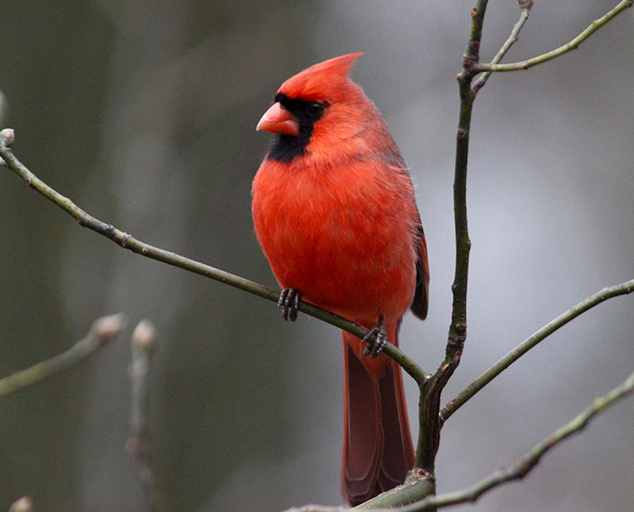
The Northern Cardinals are North American songbirds belonging to the Cardinal family. They’re well-adapted to living alongside human settlements and are seen frequenting gardens, parks, woodlands, wetlands, and shrublands.
Due to their widespread distribution, these birds have many local names, including “Redbird,” “Red Cardinal,” and “Common Cardinal.”
Northern Cardinals have 19 recognized subspecies and display sexual dimorphism. The males are larger than the females and have a brilliant crimson-colored plumage, including a red bill.
On the other hand, their female counterparts have a dull, fawn plumage. Both sexes have a similar bill. Northern Cardinals are primarily granivores but can also eat seeds, fruits, and insects.
Northern Mockingbird (Mimus polyglottos)

Northern Mockingbirds are a resident mockingbird species distributed throughout North America. They’re well-recognized by humans due to their high intelligence quotient, proven in several scientific researches and studies conducted on them.
Within the United States, Northern Mockingbirds have been declared the state bird of five different states.
Among the mimids, Northern Mockingbirds are averagely sized and have long legs and tails. The adults are sexually monomorphic.
They have a grey head and upper parts, with dark edges on their wings and tail. Their underparts are covered in a pale greyish shade, with yellow irises and a thin, black bill.
Although the average lifespan of Northern Mockingbirds is about eight years in the wild, under proper care, they can live up to even twenty years.
New Zealand Falcon (Falco novaeseelandiae)
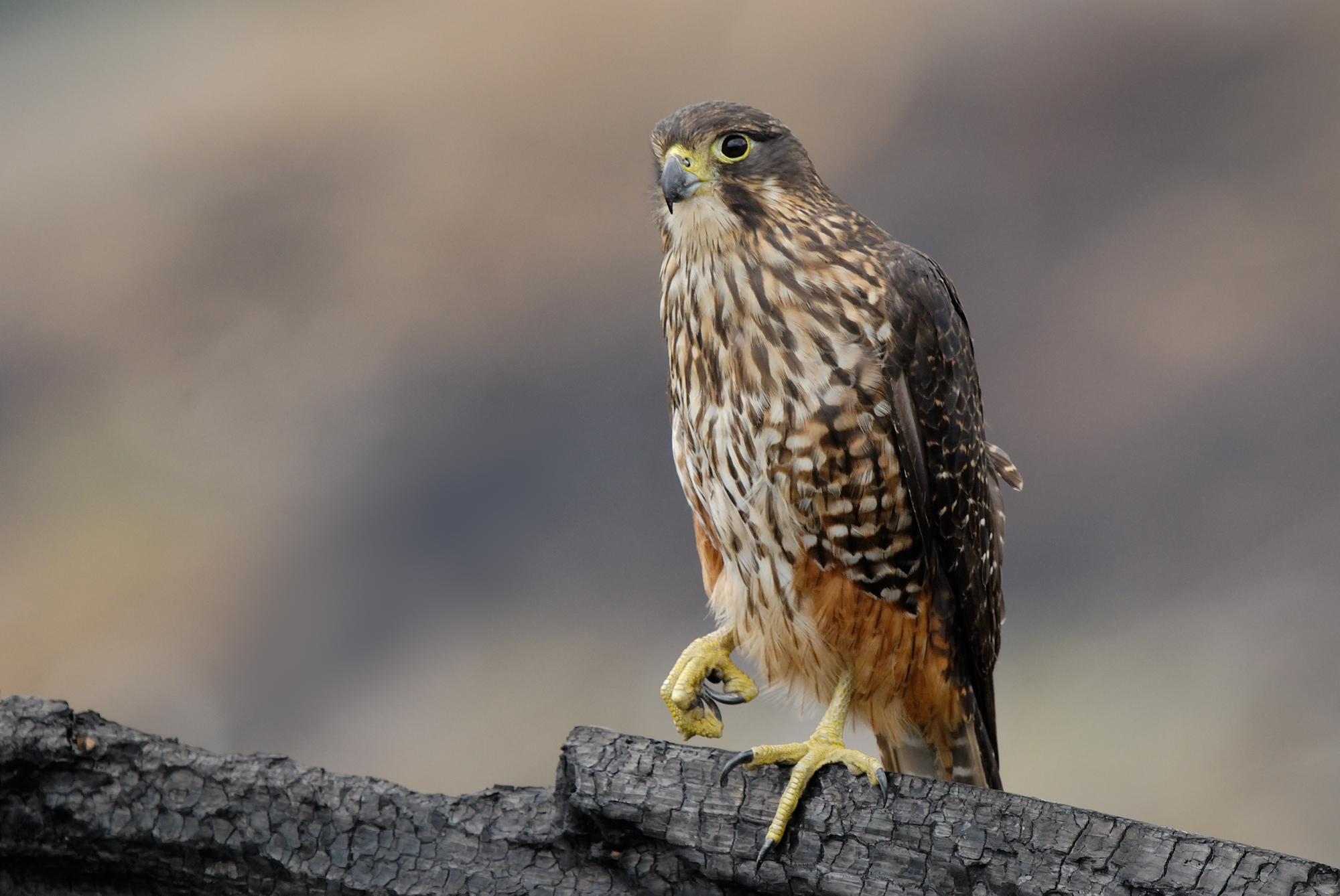
Also known as “Bush Hawk” and “Sparrow Hawk,” the New Zealand Falcons are the only falcons that are found within New Zealand. Although the IUCN has only given these birds a Near-threatened status, in New Zealand, they’re the most threatened raptor species.
New Zealand Hawks are often confused with Swamp Harriers, which are significantly larger in size. They have a mottled, chocolate-brown head and body, with dark irises, a grey bill, and buff undersides. On their chest, you can spot heavy streaking.
Both sexes of these hawks sport an identical plumage, but the males are generally larger and heavier, which is used to differentiate between the two.
Northern Harrier (Circus hudsonius)

Just as their name suggests, the Northern Harriers are birds of prey that inhabit the northern regions of the Northern Hemisphere. Within North America, you can spot them in the northernmost United States and Canada.
Northern Harriers are migratory birds and travel south to southern parts of the United States and Central America. They reside in marshes, prairies, and other open areas.
Unlike most raptors, both sexes of adult Northern Harriers have distinct plumage. They also differ in size and weight.
Northern Harriers are the raptors with the longest wings and tails in relation to their body size throughout North America.
Neotropic Cormorant (Nannopterum brasilianum)
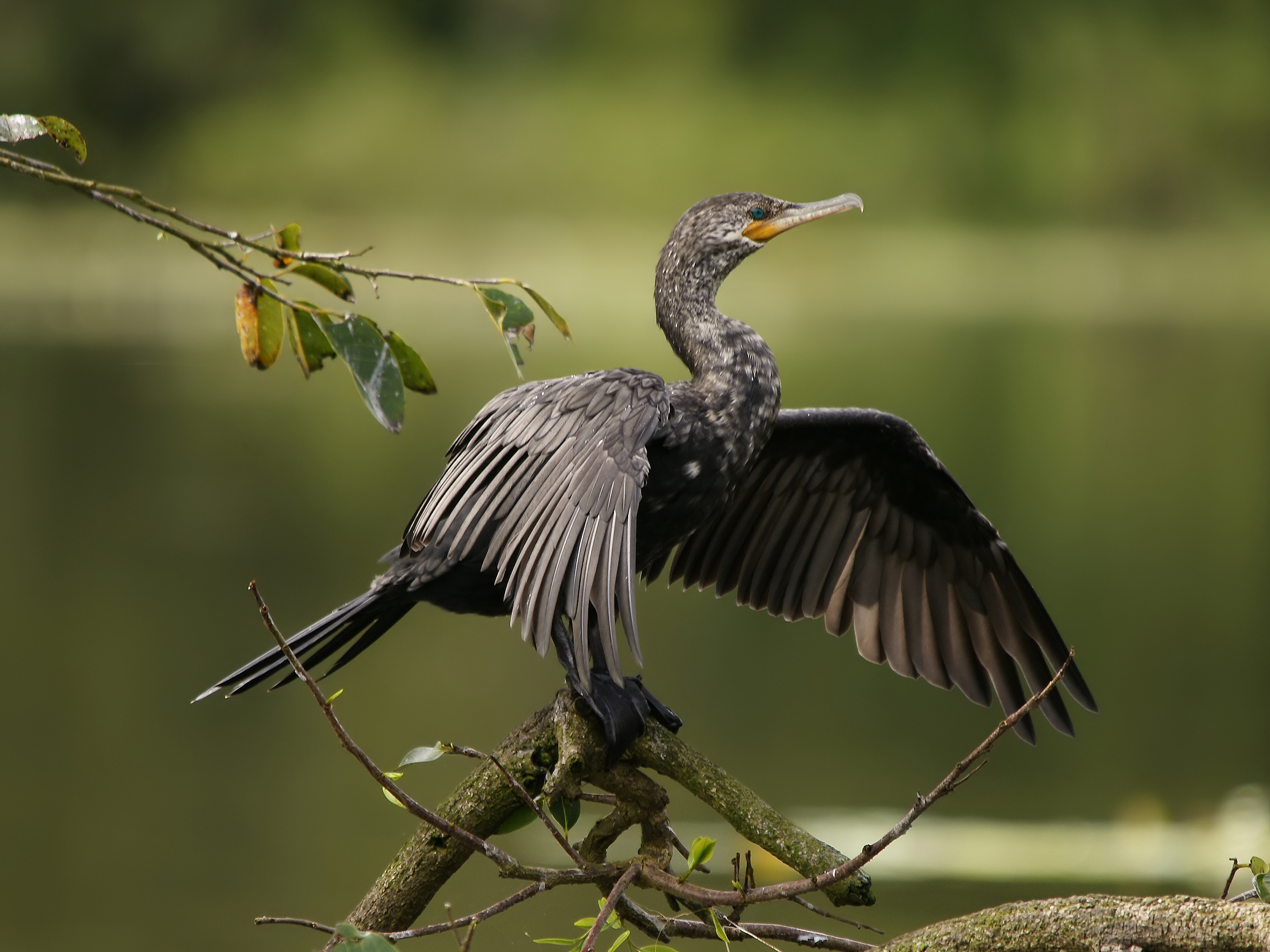
Also referred to as “Olivaceous Cormorant,” the Neotropic Cormorants are American cormorant species that have a widespread distribution with two recognized subspecies.
Neotropic Cormorants are similar in appearance to the larger Double-crested Cormorants but are quite slender-bodied. They have an overall black plumage with a long, yellow tail and yellowish-brown throat patch. Their upper wings have a touch of grey as well.
Although both the male and female Neotropic Cormorants have identical plumage, the males weigh heavier than their female counterparts.
Nelson’s Sparrow (Ammospiza nelsoni)
Named after the American ornithologist Edward William Nelson, Nelson’s Sparrows are tiny New World Sparrow family members. Earlier, these birds were considered conspecific with the Saltmarsh Sparrows but are now treated as a separate species.
Nelson’s Sparrows primarily inhabit marshes and coastal areas of Canada and central regions of the United States.
The adult Nelson’s Sparrows have a mixture of grey and brown in their plumage, with a cream-colored breast, white belly, black eyes, and a grey bill. All adults display the same plumage regardless of their sex.
Northern Flicker (Colaptes auratus)

Northern Flickers are members of the woodpecker family that are endemic to North America, Central America, and the Caribbean.
These birds have over hundreds of local names, such as “Gawker Bird,” “Harry-wicket,” “Gaffer Woodpecker,” “Common Flicker,” and “Yarrup.”
Northern Flickers have over ten recognized subspecies. The adults have an overall muted brown body with a bold, necklace-like patch on their throat. While their head is unspotted, on their underbody, you will see several black spots. Moreover, their wings are also covered in dark streaking, with a black tail.
Like most woodpeckers, the Northern Flickers also lack sexual dimorphism.
Nene (Branta sandvicensis)
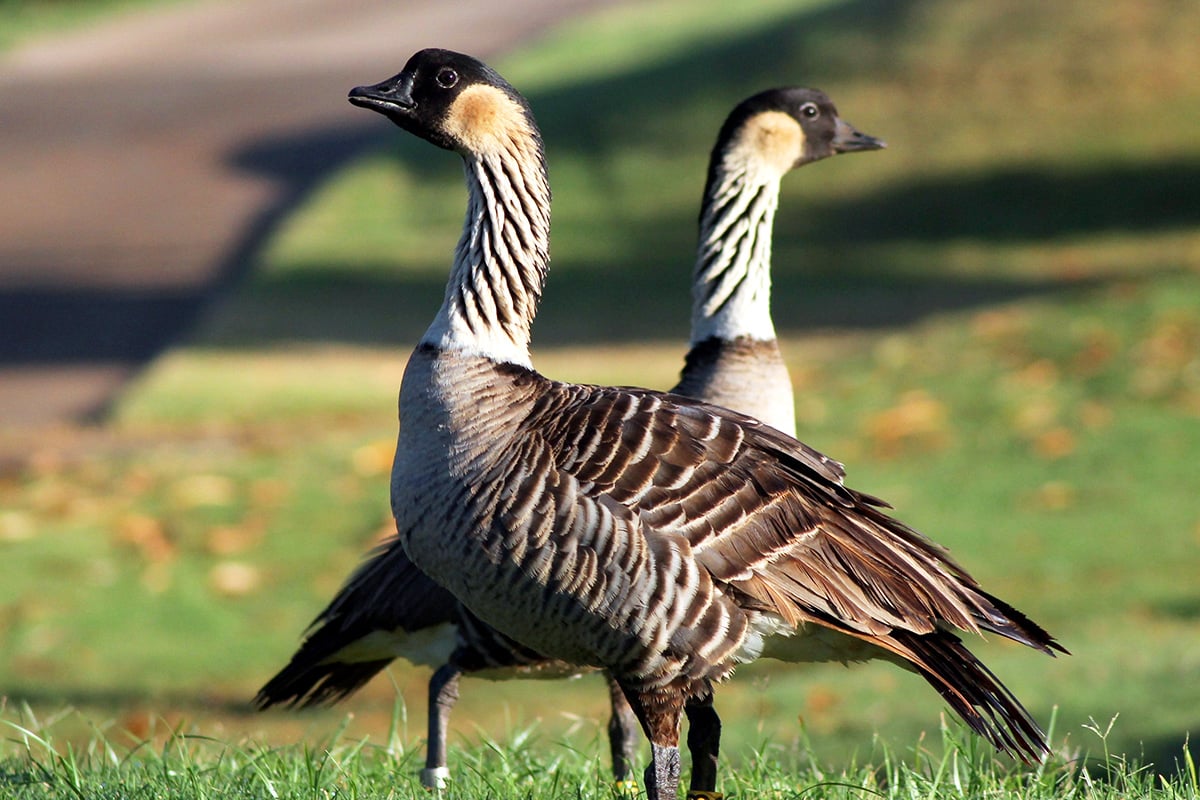
Nenes are a goose species endemic to Hawaii, which lends them their other name, “Hawaiian Goose.” Their population is restricted to the island of Hawaii, where they have a vulnerable population, making them the rarest goose species globally.
Some ornithologists believe that these birds are the successors of the Canada Geese and have evolved from them. However, there’s not enough evidence to confirm it.
Although Nenes are primarily ground-dwelling birds, they’re also capable of flight. Both adult sexes have the same plumage; only the males are 11% larger than their female counterparts.
The adult Nenes have a blackhead, buff-colored cheek spots, with the rest of their body being heavily striped with black and white. Their bill, legs, and feet are all black in color.
Northern Hawk-owl (Surnia ulula)
Northern Hawk-owls are resident owl species that contain three subspecies, one of which is found in North America. The other two subspecies are found in the central and northern parts of Asia.
Although Northern Hawk-owls are true owl species, in appearance and behavior, they resemble the hawks. Within North America, these birds closely resemble Cooper’s Hawks. The females are slightly larger than their male counterparts, but both sexes have identical plumage.
The adult Northern Hawk-owls have a dark brown head and upper parts with an off-white belly and rump. Their bill is curved at the tip and is yellow in color, and so are their eyes.
Noisy Friarbird (Philemon corniculatus)

The Noisy Friarbirds are large passerine birds belonging to the family of the honeyeaters. These aggressive birds have an omnivore diet consisting of nectar, fruits, and insects. They’re abundantly found in Australia and New Guinea.
Like the other friarbirds, the Noisy Friarbirds also have bald, featherless faces. Their entire head, including their bill, is black, with a pale greyish lower body and brown flanks. Their eyes are red, while the legs are dark blue in color.
Northern Rockhopper Penguin (Eudyptes moseleyi)

Native to the southern Atlantic and Indian oceans, the Northern Rockhopper Penguins are an endangered penguin species whose population fell down by 90% in the last 70 years.
These penguins are also known by other names, including “Moseley’s Penguin” and “Moseley’s Rockhopper Penguin.”
Northern Rockhopper Penguins have a small body with a black head and upper body and pale white undersides.
They have a thick, maroon bill and several yellow-colored plumes attached to each side of their forehead. These plumes are often used to differentiate them from other penguin species.
Noisy Pitta (Pitta versicolor)
The Noisy Pittas are an Australian Pitta species that inhabit the temperate, lowland, and montane forests of eastern Australia as well as New Guinea.
These birds might be small, but they’re quite brightly colored, which makes them remarkable to the birders. They have a black head, with a dark chestnut crown and contrasting lemon yellow chest and belly.
On their lower belly, you can see another oval-shaped chestnut patch. Their back, including the wings, is covered in bright green, with turquoise edges to their wings.
Noisy Pittas are primarily insectivorous, feeding particularly on snails and earthworms.
Northern Shoveler (Spatula clypeata)

The Northern Shovelers are a duck species with an abundant distribution throughout the Northern Hemisphere. These migratory birds are found in Europe as well as North America, wintering in the southernmost part of their range.
The most recognizable feature of Northern Shovelers is their large, spatula-shaped bill, which is uncommon in the other ducks within their range.
The adult Northern Shovelers display a significant amount of sexual dimorphism. The breeding males have a glossy, dark green head with a white breast and neck. The rest of their body is colored in chestnut.
Outside of the breeding season, both sexes have the same mottled brown plumage.
Northern Goshawk (Accipiter gentilis)
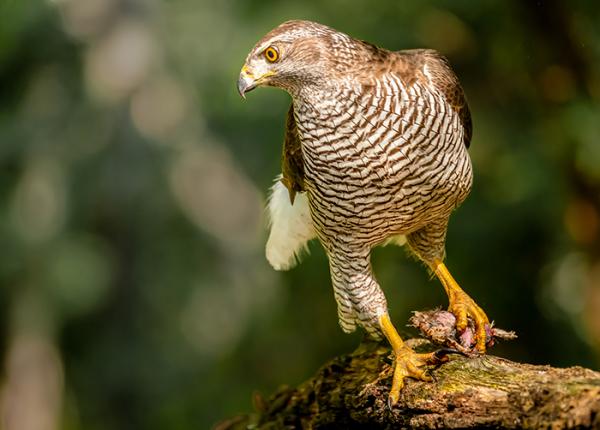
The Northern Goshawks are members of the birds of prey family that are abundantly found in the temperate areas of the Northern Hemisphere. Within North America, you can spot these raptors in the western parts of Canada and the United States.
Northern Goshawks have short but broad wings and a long tail, which is typical of all raptors in the Accipiter group. Their head and upper body are colored in a mixture of blue and grey, while the underparts are pale white. These raptors also have short legs with thick toes and a sizeable bill.
While you cannot differentiate the sex of these birds by their plumage, you can use their size for it. The female Northern Goshawks are considerably larger than their male counterparts.
New Britain Sparrowhawk (Accipiter brachyurus)

Just as their name suggests, the New Britain Sparrowhawks are birds of prey found in New Britain, New Ireland, and two islands of Papua New Guinea. These birds primarily inhabit the montane forests.
The IUCN has declared them to be a Vulnerable Species, the main reason behind which is their habitat destruction due to the large-scale clearing of trees.
The adult New Britain Sparrowhawks have a grey head and upper parts, with orange accents on their shoulders. Their chest and belly are stark in contrast. Both males and females display the same plumage.
Northern Jacana (Jacana spinosa)
Northern Jacanas are a wading bird species that breed in Central and South America. Within North America, they’re spotted as a vagrant in Texas. These seabirds are also referred to as the “Jesus Bird” in Jamaica because they appear to be walking on water.
Northern Jacanas have an overall dark body, with their black head and neck covered in bluish iridescence and their lower body being dark reddish-brown in color. They also have long, grey legs, with a yellow frontal face shield and bill.
These waders’ primary and secondary feathers are greenish-yellow in contrast to the rest of their body but can only be seen when they’re in flight.
Neddicky (Cisticola fulvicapilla)

Neddickies are tiny passerine birds that are endemic to central and southern Africa. They’re also popularly known as “Piping Cisticola.”
Neddickies are a resident species and inhabit the shrublands and light woodlands all year long. They have a dull brown plumage with buff underparts and a medium-sized tail.
Despite their size, the Neddickies are highly vocal birds, capable of producing a variety of calls, including “tic-tic-tic-tic” and “weep-weep-weep.”
New Zealand Fantail (Rhipidura fuliginosa)
The New Zealand Fantails are tiny passerine birds that are endemic to New Zealand. These birds are the only fantails you can find in all of New Zealand. They have four subspecies that vary in size and plumage; one of them has already gone extinct.
New Zealand Fantails have a black head, wings, tail, a brown back, and a rufous underbody. There are two white stripes running both above and below their eyes, which lends them a masked appearance. Both the adult sexes have similar plumage.
Northern Gannet (Morus bassanus)
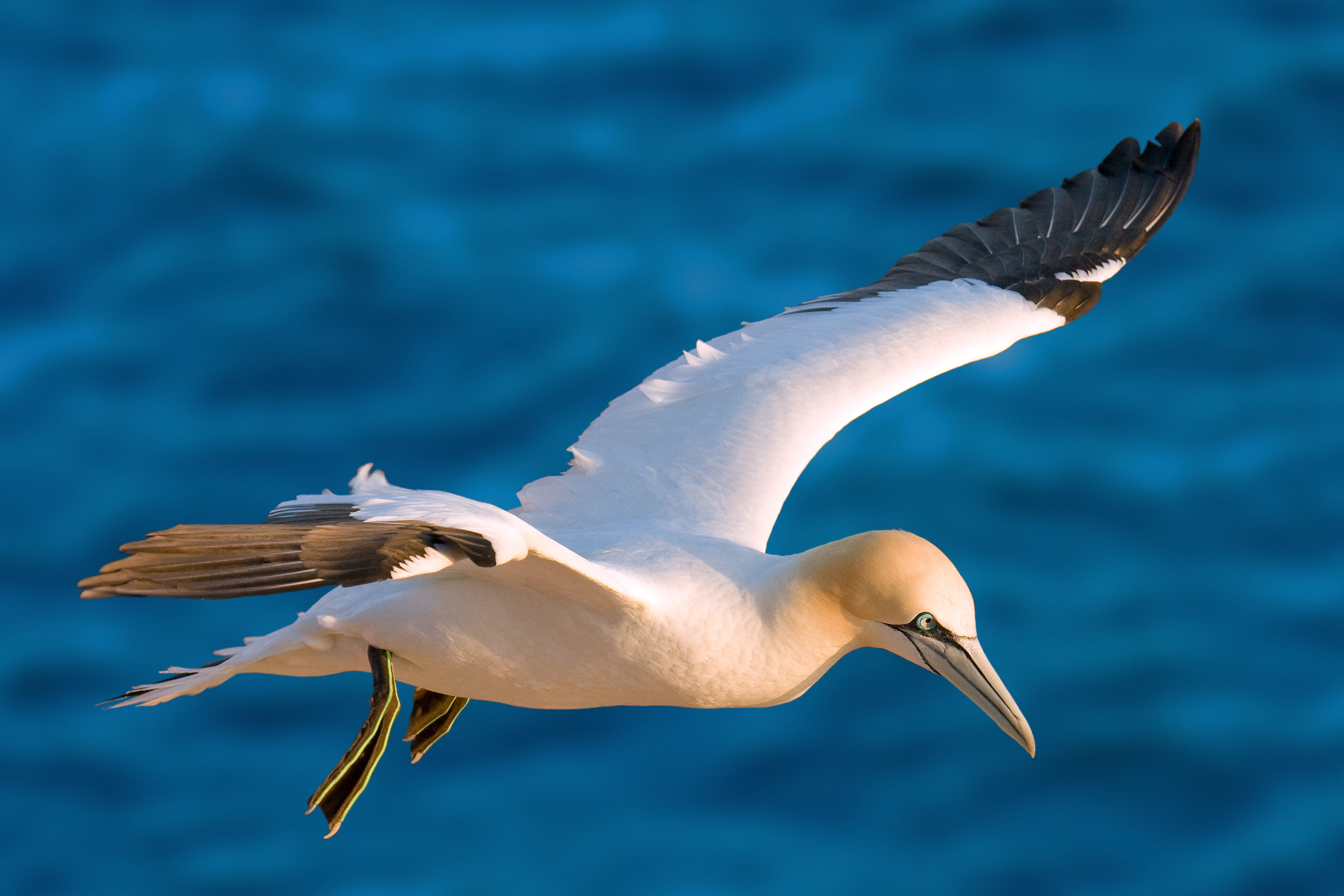
Being the largest member of the gannet family, the Northern Gannets are a large seabird species endemic to the coasts of the Atlantic Ocean.
Both sexes of Northern Gannets are similar in both size and plumage. They have a buff-yellow head and neck, white underparts, and dark tips to their white wings. The color of their head darkens to become more prominent during the breeding season.
Night Parrot (Pezoporus occidentalis)
Named after their nocturnal schedule, the Night Parrots are an Australian parrot species that have an endangered population. These parrots are so elusive that there have been very few sightings of them.
Night Parrots are also known by other names, including “Solitaire,” “Spinifex Parrot,” “Midnight Cockatoo,” and “Porcupine Parrot.” They have yellowish-green plumage and are short-tailed for a parrot. Both adult sexes carry the same coloration.
Northern Pygmy-owl (Glaucidium californicum)

Northern Pygmy-owls are small owl species that belong to the western regions of North America. They have four recognized subspecies, with little differences in size and plumage.
These owls have a brownish-grey body with their heads covered in white spots. While their breast is dark, the lower body is pale whitish with dark streaks. Their yellow eyes stand in contrast with their otherwise dark face.
Newell’s Shearwater (Puffinus newelli)

Also referred to as the “Hawaiian Shearwater,” the Newell’s Shearwaters are a seabird species endemic to the island of Hawaii. Their population is critically endangered, particularly due to habitat destruction and increased predation.
Newell’s Shearwaters have a dark head and upper parts tinged with brown, while their underparts are white. They have a dark bill, with pale pink legs and feet.
Northern Lapwing (Vanellus vanellus)
Also known as “Green Plover,” the Northern Lapwings are a ground-dwelling bird species endemic to Euroserbia. They’re migratory and travel south to northern parts of Africa during winters.
These wading birds primarily inhabit short vegetation and cultivated lands and have a white face and underbody. On their head, they have a dark crest extending to their throat. Their wings and tail are dark with green and pink gloss. They have short, reddish legs and a dark bill.
Narrow-billed Antwren (Formicivora iheringi)

The Narrow-billed Antwrens are an antbird species commonly found in the eastern parts of Brazil. These little birds display sexual dimorphism in plumage. Adult males have a dark grey plumage with a black breast, while female counterparts have mainly olive-green bodies.
The population of Narrow-billed Antwrens is registered as Near-threatened by the IUCN, with habitat loss being the main threat to their survival.
Nutall’s Woodpecker (Dryobates nuttallii)
Named after the English botanist Thomas Nutall, the Nutall’s Woodpeckers have a widespread distribution in the United States, particularly in California.
Nutall’s Woodpeckers have black wings and tails with white bars all over them, with white underparts. You can distinguish between the sexes by their head crest; the males have a red crest, which is absent in their female counterparts.
Nicobar Pigeon (Caloenas nicobaria)

Being the only surviving member of their genus, the Nicobar Pigeons are a near-threatened pigeon species found in the Andaman and Nicobar Islands, India.
Nicobar Pigeons are quite large for a pigeon and have a grey head, with long, iridescent neck plumes. Their entire body is covered in long, grey feathers with a green gloss covering them. They have dull red feet and dark irises. Both sexes have the same plumage, although the males are slightly larger in size.
New Zealand Grebe (Poliocephalus rufopectus)
The New Zealand Grebes are aquatic birds native to New Zealand. They’re also known as “Weweia” and “New Zealand Dabchick.”
New Zealand Grebes have a black head and bill, with dark brown plumage and fine silver feathers. They have yellow eyes that appear to contrast with the rest of their face. The females have slightly duller plumage than their male counterparts, are smaller, and have a shorter bill.
Conclusion: Birds That Start With N
To all those aspiring birdwatchers, you now know the impressive diversity of different birds that start with the letter N. You can observe them in native habitats throughout North America and Europe, as well as the more distant territories of Asia and Australia.
And from our bird identification guide, you can also see what colors they have, how big they are, what sounds they make, and how they taste (in my opinion: like chicken). And lastly but not leastly (hehe), you now know where to find these magnificent winged wonders.
So go out there and keep birdwatching!
Birds By Alphabet (A-Z List)
Birds that Start with A
Birds that Start with B
Birds that Start with C
Birds that Start with D
Birds that Start with E
Birds that Start with F
Birds that Start with G
Birds that Start with H
Birds that Start with I
Birds that Start with J
Birds that Start with K
Birds that Start with L
Birds that Start with M
Birds that Start with N
Birds that Start with O
Birds that Start with P
Birds that Start with Q
Birds that Start with R
Birds that Start with S
Birds that Start with T
Birds that Start with U
Birds that Start with V
Birds that Start with W
Birds that Start with X
Birds that Start with Y
Birds that Start with Z







